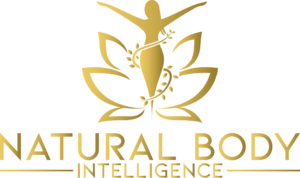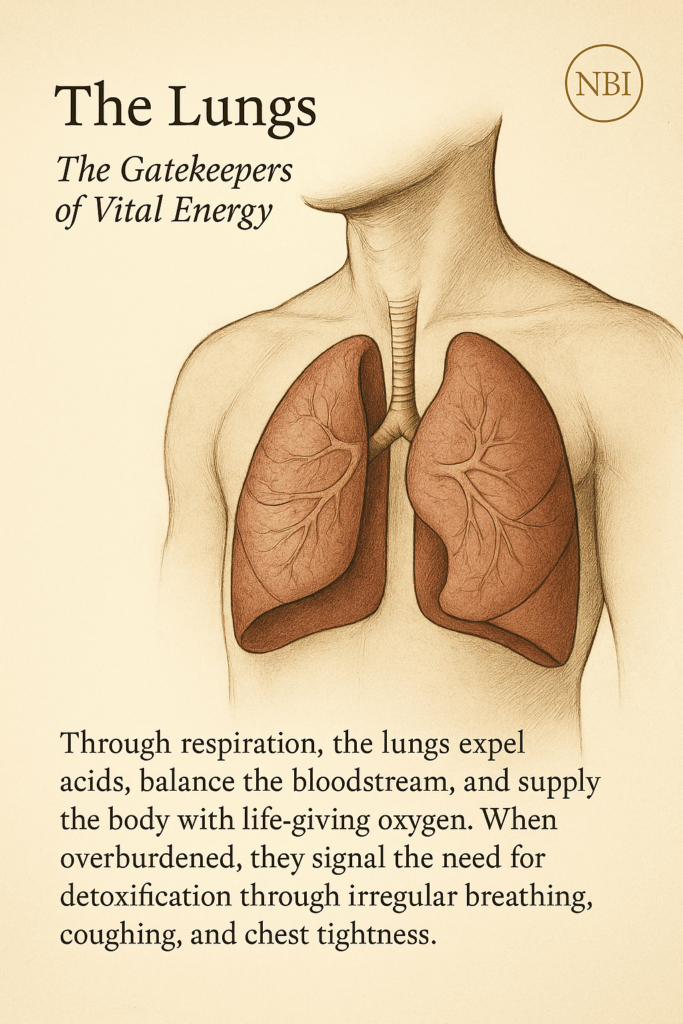The lungs are the body’s quiet gatekeepers, opening and closing with a rhythm so constant that most people forget the miracle of what they do. With every breath, they draw the outside world into the inner terrain, exchanging gases, releasing acids, and keeping the bloodstream balanced and alive. The lungs are not only organs of respiration; they are one of the body’s primary channels of elimination. Through them, the body expels carbonic acid — a major by-product of metabolism — and creates the conditions for energy, clarity, and internal harmony.
In Natural Hygiene, the lungs are understood as a balancing force. When the bloodstream becomes overloaded with metabolic waste, acidic by-products, or emotional tension, the lungs work harder to release what the kidneys and colon cannot keep up with. The breath becomes quicker or shallower, often without us realising. This is the body’s attempt to restore equilibrium. Breathing is not only about oxygen; it is about cleansing the inner waters of the blood.
When the inner terrain is clear, breathing feels effortless. The chest expands freely, the diaphragm moves smoothly, and the entire body feels nourished by the flow of air. But when the terrain is burdened — through stress, overeating, pollution, shallow breathing, or emotional suppression — the lungs reflect this congestion. Symptoms emerge: tightness in the chest, frequent sighing, coughing, mucus build-up, shortness of breath, or a persistent feeling of pressure beneath the ribs. None of these are random. They are the lungs communicating that the body is carrying more than it can easily release.
Breath is also deeply tied to emotion. The lungs respond instantly to fear, anxiety, grief, overwhelm, and tension. A stressful moment can shorten the breath. A loss can make the chest feel heavy. Long periods of suppressed emotion often show themselves as tightness or irregular breathing. This is because breathing is one of the most direct bridges between the physical and emotional body. When the breath is restricted, the flow of life within us slows too.
Natural Hygiene reminds us that the lungs thrive under conditions of purity and calm. Air rich in oxygen, movement that strengthens the respiratory muscles, and simple, water-rich foods that reduce the burden of acidity all support easy breathing. Fasting plays a powerful role as well. When digestion rests, the bloodstream clears, and the lungs no longer need to overwork to expel excess acids. Many people describe a dramatic shift in their breathing after only a short fast — the chest opens, the breath lengthens, and a sense of spaciousness returns to the body.
Movement is essential. Walking, stretching, rebounding, and gentle exercise increase circulation, deepen breathing, and support the natural rhythm of exhalation. Sunlight energises the lungs, and fresh air clears stagnant carbon dioxide. Even posture affects lung function; when the spine is collapsed, the diaphragm cannot move properly, limiting the body’s ability to cleanse itself through breath.
As the terrain improves, the lungs respond with unmistakable grace. Breathing becomes deeper, calmer, and more rhythmic. The chest feels open rather than compressed. Mucus begins to clear, and the body no longer needs to use coughing as a cleansing mechanism. People often describe feeling a renewed sense of energy, mental clarity, and emotional release. This is the lungs returning to their natural state — cleansing, balancing, and feeding the entire system with the energy of life.
The lungs remind us that life flows best when we allow space. Breath is the language of presence, calm, and internal balance. Each inhalation invites renewal, and each exhalation releases what the body no longer needs. When we honour the lungs through rest, movement, simplicity, and connection with nature, they reward us with vitality that reaches every cell.
Breathing is the most constant act we perform, yet it is also the most overlooked. When we learn to breathe in alignment with the body’s needs — slowly, deeply, and naturally — we begin to experience health from the inside out.


